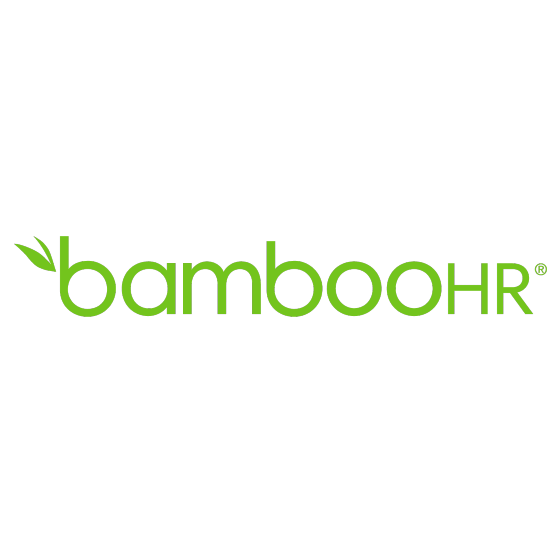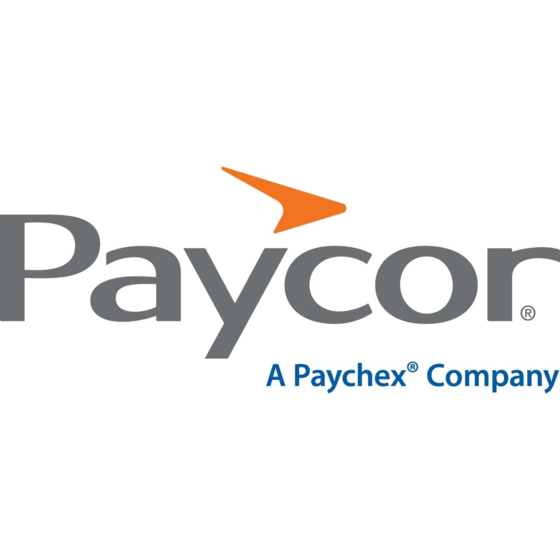Ever wonder who's responsible for making sure everyone gets their paycheck on time, or how companies ensure that the right taxes are deducted?
Enter the world of payroll administration—the unsung heroes of the organizational wheelhouse.
Here I’ll take you through what payroll administration is, the key challenges, and some best practices for doing it effectively.
What Is Payroll Administration?
Payroll administration is all about making sure employees get paid accurately and on time while keeping everything legal and compliant.
It involves calculating wages, deducting payroll and income taxes, managing benefits, processing payments, and handling all the behind-the-scenes details that keep payroll running smoothly.
There’s often debate about where the responsibility for payroll administration lies. Does HR do payroll? Does accounting/finance? The answer is, well, it depends.
In a small organization, payroll might fall under the responsibility of human resources.
If doing payroll for one employee, business owners may need to do payroll themselves.
In a larger organization with a dedicated finance team, payroll specialists will take on the administrative responsibilities and the function will liaise with HR when it comes to communicating updates or creating compensation structures.
Importance Of Payroll Administration
You might think, "Isn't payroll just about paying people?" But there's more to it than that!
Ensures compliance with laws
Every country has its own set of labor and tax laws. Payroll administrators ensure that companies adhere to these regulations. Imagine the mess if everyone decided their own tax percentages!
Streamlines business operations
Efficient payroll administration helps streamline business operations. How? By ensuring that payments are made promptly, resources are allocated appropriately, and financial documentation is in order.
Employee satisfaction
Ever waited anxiously for a paycheck? Delays or errors in payment can cause dissatisfaction among employees. A seamless payroll process ensures that employees are paid accurately and on time.
Components Of Effective Payroll Administration
Effective payroll administration requires a combination of technology, procedures, and meticulous record-keeping.
Payroll software
Modern businesses rely heavily on payroll software for payroll processing. These tools automate calculations, manage deductions and direct deposit, and ensure timely payments, making the administrator's life much easier.
Many will have an employee self-service feature where workers can access their payroll info, and some enable flexible payroll through features such as on-demand pay and flexible pay schedules.
Read more in our article What does payroll software do?
Payroll procedure
A well-defined procedure is essential. This includes ensuring employee data is correct e.g. wages, overtime, bonuses or deductions, calculating earnings, and processing payment.
As I’ll cover shortly, some organizations will run this in-house whereas others will outsource to a payroll service provider.
Documentation and record keeping
Remember those tax laws we talked about? Proper payroll documentation ensures compliance and is crucial for addressing any discrepancies or issues that might arise.
-

Deel
Visit WebsiteThis is an aggregated rating for this tool including ratings from Crozdesk users and ratings from other sites.4.8 -

BambooHR
Visit WebsiteThis is an aggregated rating for this tool including ratings from Crozdesk users and ratings from other sites.4.4 -

Paycor
Visit WebsiteThis is an aggregated rating for this tool including ratings from Crozdesk users and ratings from other sites.4.1
Challenges In Payroll Administration
Like every process, payroll administration comes with a unique set of challenges. Here are the most common with some tips to overcome them:
Compliance with tax and labor laws
Payroll laws change frequently, and failing to stay updated on tax rates, minimum wages, or reporting requirements can lead to fines and legal issues.
Employers must ensure accurate tax filings and adherence to labor laws in every jurisdiction where they operate.
Payroll errors and miscalculations
Mistakes in wage calculations, tax withholdings, or benefits deductions can result in overpayments, underpayments, or compliance penalties. Even minor errors can lead to employee dissatisfaction and require time-consuming corrections.
Best practice: Implement a payroll checklist and conduct regular audits to catch and correct errors before payroll is processed.
Managing employee classification
Misclassifying employees as independent contractors or full-time staff can result in tax liabilities, penalties, and compliance violations. Employers must properly categorize workers based on employment laws to avoid audits and legal disputes.
Here’s our guide to an independent contractor vs employee.
Data security risks
Payroll systems store sensitive employee data, making them a prime target for cyber threats, fraud, or identity theft.
Best practice: Use multi-factor authentication (MFA) and encrypted payroll software, and conduct regular security audits to safeguard employee payroll data.
Handling payroll for a global workforce
Employers managing payroll across multiple countries must navigate different currencies, tax laws, and labor regulations, increasing complexity. Ensuring compliance while maintaining accurate, timely payments requires robust payroll systems and local expertise.
Dealing with payroll discrepancies and employee disputes
Employees may raise concerns about incorrect paychecks, missed bonuses, or deductions they don’t understand, leading to dissatisfaction and potential legal disputes. Delays in resolving such issues can harm employee trust.
Tip: Maintain transparent payroll records and set up a clear payroll dispute resolution process, ensuring employees can easily report and resolve discrepancies.
Calculating wages
This sounds easy, but it can get quite complicated. First of all, all the information has to be present and correct (not always easy) and then wages, bonuses, deductions, and expenses need to be carefully calculated in the right order.
Outsourcing Vs. In-House Payroll
Companies often face this dilemma. Should they manage payroll in-house or outsource it to a payroll service provider?
If you're a small company that doesn’t have a payroll administrator and are trying to do payroll yourself, the process can take up valuable time that could be better focused on more strategic projects.
Larger organizations might want to keep the process in-house to have more control if something goes wrong. It may also be that, for these organizations, it becomes more cost-effective to run in-house.
Payroll Outsourcing Options Comparison Table
Use this table to help decide which option is best for your business:
| Outsourcing Option | Description | Best For | Key Features | Examples |
| Full-Service Payroll Providers | End-to-end payroll processing (calculations, payments, tax filings) | Small to midsize businesses | Automated payroll, tax filings, basic HR tools | ADP, Paychex, Gusto, QuickBooks |
| PEOs (Professional Employer Organizations) | Co-employment model: payroll, benefits, HR compliance | Growing companies needing full HR support | Shared legal responsibility, benefits management, HR guidance | Justworks, TriNet, Insperity |
| EORs (Employer of Record) | Legally employs workers on your behalf in foreign countries | Companies hiring internationally without legal entities | Global payroll, local tax compliance, benefits, employment contracts | Deel, Remote, Oyster, Papaya |
| Payroll Bureaus / Accountants | Local or regional firms offering payroll and tax services | Small, local companies with simple payroll needs | Personalized service, jurisdiction-specific knowledge | Local accounting firms |
| Software-Only with Support Add-ons | Self-managed tools with optional support for filings and compliance | Tech-savvy teams or companies with in-house HR/payroll | Cloud-based automation, self-service portals, add-on support for taxes and compliance | Rippling, Zenefits, Square |
For a deeper dive, take a read of our article on using payroll software vs payroll services.
Payroll Taxes
As mentioned, a particularly niggly aspect of payroll administration is deducting the appropriate payroll taxes from the employee’s paycheck, for example:
- Social security: Known collectively as FICA taxes, both you and your employees contribute to these. The Social Security tax is 6.2%, paid by both the employee and the employer, for a total of 12.4%.
- Medicare taxes: The tax for Medicare is 1.45% for the employer and 1.45% for the employee, for a total Medicare tax of 2.9%.
- State and local taxes: Some states and local authorities might impose additional taxes.
Here’s a more comprehensive breakdown of payroll taxes.
Required Payroll Documents
Payroll documents are important because they ensure accurate recordkeeping, compliance with tax and labor laws, and provide proof of earnings, deductions, and payments for both employers and employees.
Here’s a list of the documents you need for effective payroll administration:
- Form 940: An annual federal tax form that employers must file if they’ve paid wages of $1,500 or more in a calendar quarter. It's used to report the employer's annual Federal Unemployment Tax Act (FUTA) tax liability.
- Form 941L: A form that employers must file quarterly to indicate how much they withheld in payroll taxes across all their employees per quarter. It's necessary for most small businesses that withhold federal income taxes and FICA taxes from their employees' paychecks.
- Form 944: A form that businesses must file if their annual liability for Social Security tax, Medicare Tax, and federal income tax is $1,000 or less.
- Form W-4: Also known as the Employee's Withholding Certificate, this form is filled out by employees upon being hired to let their employers know how much tax the employers should withhold from their paychecks.
- Form 1095-C: An employer-provided health insurance offer and coverage form that applicable large employers must file. It includes information about the health coverage for the employee, including the cost and covered months.
- Form 1096: A form used by the payers to summarize 1099-INT Forms being filed with the IRS. It's only required when 1099-INT Forms are filed by paper.
- Form 1099: A tax document that details any earnings received outside of the salary paid by an employer. It's required for self-employed people or those who run a side hustle.
- Form WH-347. As part of the David-Bacon Act, businesses working on government construction contracts worth over $2000 must submit certified payroll using this form.
The Future Of Payroll Administration
Payroll administration, though often overlooked, is a cornerstone of a company's operations.
Efficient management ensures compliance, employee satisfaction, and streamlined business operations. Whether you choose in-house or outsourcing, the key is to prioritize accuracy and efficiency.
AI tools are being developed to help with an increasing amount of functions and payroll is no different.
For example, AI can help administrators ensure people are in the correct tax bracket or consider taking a payroll training course. If you're having trouble meeting your payroll obligations, then payroll funding might be a good option for you.
FAQs
What does a payroll administrator do?
The primary role of a payroll admin is to manage and organize the payment of salaries to employees while ensuring compliance with laws and regulations.
Is a payroll administrator part of HR?
Yes, a payroll administrator can be part of HR, but in some organizations, they may fall under the finance or accounting department, depending on company structure.
What are the responsibilities of payroll?
Payroll is responsible for processing employee wages, ensuring accurate calculations of salaries, taxes, and deductions while complying with labor laws. It also handles payroll disbursement, recordkeeping, and reporting, working closely with HR and finance to manage compensation and benefits.
How do payroll administrators handle discrepancies?
They review records, consult with relevant departments, and make necessary corrections, ensuring transparency with the affected employee.
Can payroll be managed manually?
Yes, but it’s more prone to errors and inefficiencies. Modern software solutions are recommended for accuracy.
Subscribe To The People Managing People Newsletter
For further payroll admin advice, subscribe to our weekly newsletter for HR and business leaders. You’ll receive all our latest content to help you grow in your career and make greater impact in your org.








